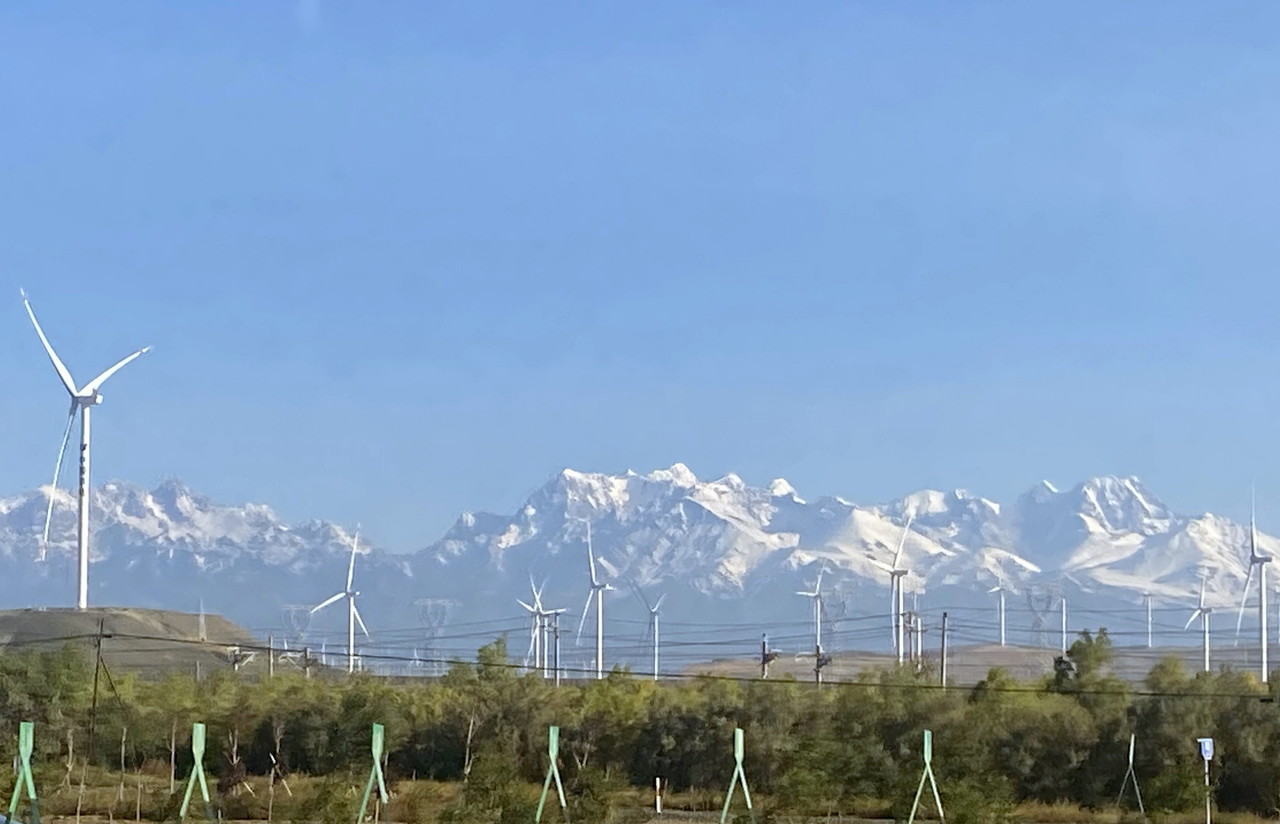By Voon Miaw Ping
URUMQI (China), Nov 19 (NNN-Bernama) — The Xinjiang Uygur Autonomous Region is emerging as China’s dynamic economic powerhouse, driven by its strong emphasis on scientific development and the adoption of cutting-edge technology.
Official data reveals that in the first half of 2023, the region’s Gross Domestic Product (GDP) surpassed 854.2 billion yuan (approximately US$118.4 billion), marking a 5.1 per cent increase year-on-year.
During the period, the total output value of the agriculture, forestry, animal husbandry and fishery sectors reached over 123.8 billion yuan (approximately US$17.2 billion), up 5.7 per cent year-on-year.
Additionally, Xinjiang’s foreign trade experienced remarkable growth, surging by 51.2 per cent year-on-year to reach 219.19 billion yuan (approximately US$30 billion) in the first eight months of 2023.
Abdul Ghani, the Information and Culture Division Liaison Officer at the Xinjiang Foreign Affairs Office, projects that the region’s GDP to achieve a 7 per cent growth rate this year. In 2022, Xinjiang’s GDP already showed impressive progress, reaching 1.77 billion yuan, reflecting a 3.2 per cent increase over the previous year.
A Malaysian delegation consisting of journalists and representatives from youth organisations recently embarked on a trip to Xinjiang to gain a deeper understanding of the region’s economic and developmental dynamism.
Strategically positioned in the northwest of China and spanning an expansive 1.66 million square kilometres, Xinjiang stands as China’s largest region, playing a pivotal role in the Belt and Road Initiative.
Xinjiang shares borders with eight countries – Mongolia, Russia, Kazakhstan, Kyrgyzstan, Tajikistan, Afghanistan, Pakistan and India – making it China’s gateway to Central Asia and the West.
In addition to its breathtaking landscapes and rich resources, Xinjiang serves as a hub for advanced manufacturing, agricultural industries, green energy, and scientific exploration.
Innovation bolsters food security
The delegation visited Join Hope Seeds Co. Ltd, a leading integrated agricultural company based in Changji, focusing on sustainable modern agricultural development to strengthen food security in the nation.
Founded in 2003, it is a major producer of cotton, corn and wheat, primarily catering to the domestic market.
In addition to cultivation, Join Hope Seeds places a strong emphasis on establishing a holistic scientific research platform to enhance food security within the country’s seed industry.
With over 140 researchers and scientists, the company conducts research and development to produce high-quality and resistant crop varieties. Notably, their research has led to cotton varieties with higher yields and improved quality. To date, they have produced more than 300 new crop varieties, including wheat, corn, cotton and various other crops.
The Xinjiang Agricultural Expo exemplifies the region’s transformation in modern agricultural excellence, aimed at ensuring sustainable food security in the country.
This permanent site covers approximately 2,300 acres and features 21 smart greenhouses and cultivation plots. It serves as a demonstration and promotion centre to introduce farmers and breeders to new cultivation technologies and crop varieties.
Space research and exploration
The delegation also had the privilege of visiting the Xinjiang Astronomical Observatory (XAO) in the Tianshan Mountains. Situated at an elevation of 2,080 metres with a dry climate and minimal radio frequency interference, XAO ranks among China’s five major astronomical observing bases. It plays a pivotal role in advancing astronomical and space research in the region.
XAO also serves as one of the four very-long-baseline interferometry (VLBI) stations alongside Beijing, Shanghai and Kunming, participating in major national programmes, including China’s moon exploration project, the Chang’e project, and the Mars exploration project, Tianwen. The observatory is also engaged in research efforts to detect life in space, according to an official at the centre.
Furthermore, XAO plays a vital role in promoting science and technological education, especially among the region’s youth.
People-centric development policy
In Turpan’s Grape Valley, a prefecture southeast of Urumqi, Hua Changqing from the Turpan Foreign Affairs Office shared insights into a government-led initiative that has elevated the socio-economic status of local residents.
Under the “Society Benefits Through Tourism” programme, villagers are encouraged to convert parts of their homes into homestays for visitors to Turpan, renowned as the “Grape Capital of China”.
Hua explained that many villagers in the region are traditional grape growers with spacious homes featuring multiple rooms and courtyards that often remain unused throughout the year. The programme encourages villagers to open their homes to visitors, offering accommodation and an authentic Uygur experience.
The initiative has significantly benefitted around 70 families in the valley, increasing their income nearly fivefold. While grape growers used to earn approximately 20,000 yuan per harvest, participants now earn over 100,000 yuan during the peak tourist season from May to October.
For those unable to allow in tourists, they are assigned to work in maintaining tourist sites and attractions, providing them with additional income. The culture and tourism office also organises events, such as the Grape Festival, Mulberry Festival and Apricot Festival, to further boost the tourism industry.
— NNN-BERNAMA






